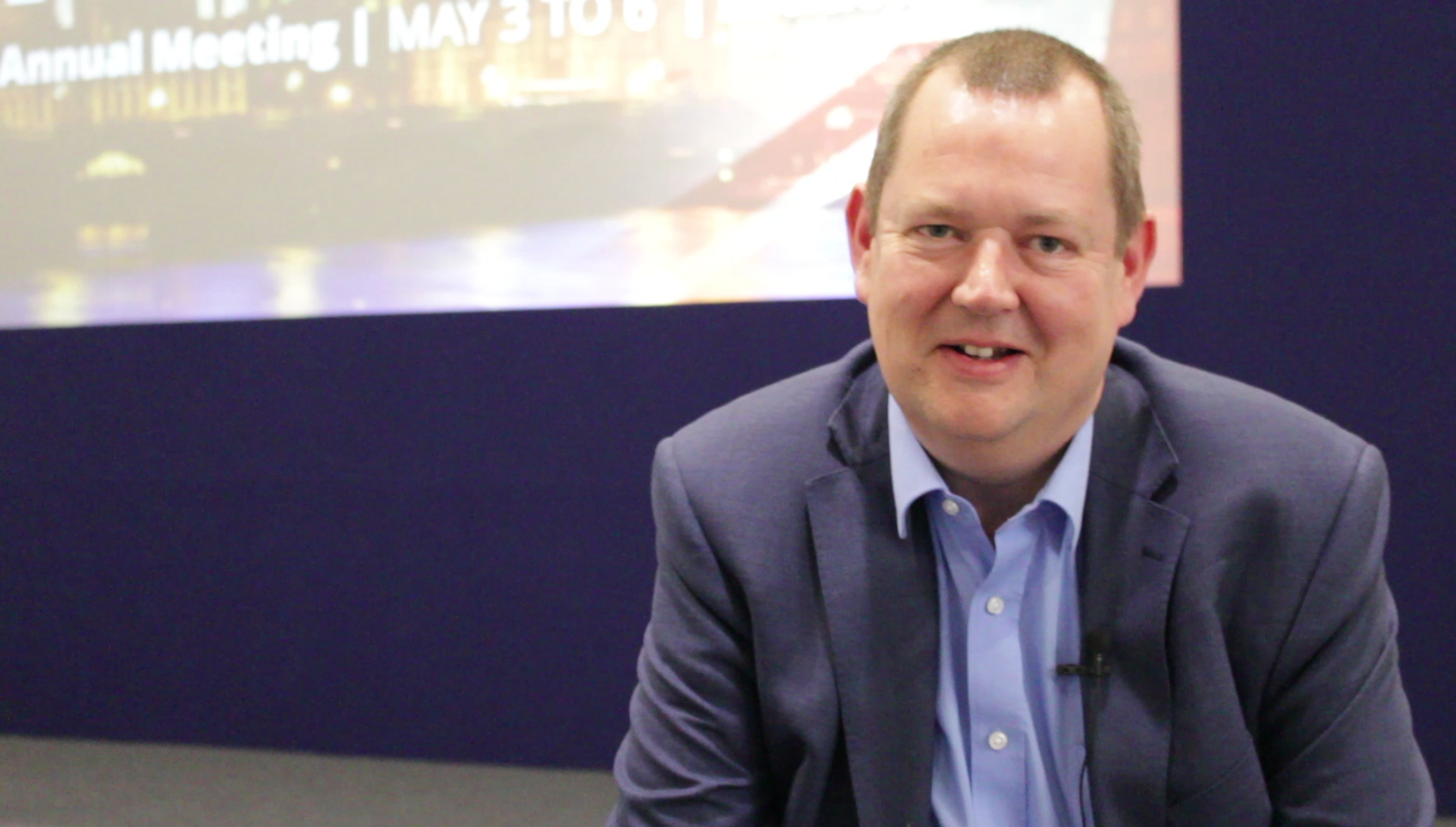Why the FDA’s CAR-T approval sends strong signal to cell therapy industry: an interview with Martin Lamb

In this interview, Martin Lamb, TrakCel, discusses the recent FDA approval of Novartis’ CAR-T cell therapy.
In this interview, Martin Lamb, TrakCel (Cardiff, UK), discusses the recent FDA approval of Novartis’ (Basel, Switzerland) CAR-T cell therapy and its implications for the cell therapy industry.

Martin Lamb
Martin Lamb has held a variety of senior business development roles in leading contract development and manufacturing organizations throughout his 25-year career in the pharmaceutical and biotechnology industry and is currently Executive Vice President of Sales and Marketing at TrakCel. Prior to joining the company, Martin was Director of European Business Development for Catalent Pharma Services. During his time as Vice President of Global Business Development at the Almac Group, Martin helped the group’s clinical trial supply business grow from a niche service offering to a major business with over 1,500 staff internationally.
Can you tell us what happened and why it’s so exciting?
This technology has been talked about as the potential fourth pillar of cancer therapy but while results in early studies were impressive, they were restricted to research in a limited number of patients. Novartis’s trials, conducted in patients that have failed to respond to traditional therapies have been phenomenal with overall response rates of over 80% in otherwise incurable patients. I don’t know of any drug that is that effective in the wider patient population let alone in patients who have failed to respond to any other treatment. From a patient point of view, I think this is the first of many potentially curative therapies, so the approval is very encouraging. The optimism of the market has been matched by the regulators in this big landmark case.
Why is this approval important for the industry?
You learn from every approval process. We saw the presentations that Novartis gave to the FDA and during the Oncologic Drugs Advisory Committee (ODAC) Meeting which give smaller companies who don’t have Novartis’ experience an idea of what it takes to get these products approved. It helps them understand what the FDA is looking for, which boxes need to be ticked, what questions will be asked and what should be focused on, for example the safety issues or the success of the therapy.
There are potential side effects with cell therapies, especially with CAR-T, such as cytokine release syndrome. Nevertheless, FDA was aware of these, and that there were deaths during the clinical trials of Novartis’ product, but they were still sufficiently encouraged by the efficacy data to approve the therapy.
What are the challenges of manufacturing a CAR-T cell therapy?
The main challenge is the complexity of the supply chain. It’s vital when we take starting material from a patient and genetically modify it, scale it up and send it back for infusion that it goes back to the same patient; we can’t afford any mistakes there. You need to track that product from when the initial cells are collected right through to final infusion.
As it passes through the supply chain, a CAR-T product passes through lots of pairs of hands, for example: the person who collects it, the courier and others involved in transport of the product, the person who manufactures it, testing labs and finally back to the clinic. It’s vital that throughout that process it’s handled carefully and consistently and the clinician knows the therapy they’re infusing into the patient is the right therapy.
Another complexity is that the starting material is coming from multiple sources. In the traditional pharma industry, the starting material of active ingredients usually comes from a single manufacturing site that is good manufacturing practice (GMP)-compliant. With Novartis’ product, they will initially be working with up to 35 clinics which means there is potentially 35 different sources of starting materials. Each of the 35 sites might have their own collection process, they might be using different equipment, have the product at different temperature and utilize different shipping processes to get the material from the clinic to the manufacturing site. All of this brings in inconsistency and could result in an inconsistent product. It’s important that this inconsistency is managed as far as possible to ensure that risks to product viability are minimized.
The manufacturing process is also very complex. It’s an individual personalized medicine; they’re not producing hundreds of thousands of doses in a batch, it’s just one dose. It’s not as amenable to automation as traditional process so a lot of the processes are manual; they are highly technical and performed by highly skilled operators which may limit the scalability of these treatments.
CAR-T treatments are cells; they are living therapies and can easily be impacted by the way they’re handled, so they need to be tracked and controlled throughout the life cycle. TrakCel is part of the Chimeric Antigen Receptors (CARs) for Advanced Therapies (CARAT) consortium, a European initiative consisting of 8 companies aiming to make the European Union the center for CAR-T manufacturing. TrakCel is working with our partners in CARAT to develop ways we can make this a more efficient process.
As part of our involvement in CARAT , we’ve looked at the current CAR-T manufacturing process from collection to infusion; there are 151 process steps, of which 54 are decision points which need to be captured and documented, and that’s just for one dose. If Novartis is successful in treating thousands of patients, the management involved is going to be phenomenal.
How much will this therapy cost?
Novartis estimates the product manufacturing alone costs US$300,000 per batch, even before clinical and logistical costs are included. The list price for the therapy has been announced at US$475,000 and I’m not surprised it’s as high as that.
Because of the risk of cytokine release syndrome, the hospitals administering CAR-T therapies will need to have experience in dealing with the side effects and managing patients so the syndrome doesn’t do any irreparable harm. Rolling out to a limited number of clinics initially will give Novartis the ability to monitor and manage the therapies more closely.
Is there scope for this cost to come down in the future?
There are certainly things we can do to make the process more manageable. Utilizing a management system like TrakCel can reduce some of the burden on the management of the therapy by capturing key events and key data in the product life cycle. We can help clients achieve consistency across their supply chain by implementing workflows in clinical settings to ensure the cells are collected consistently and potential sources of error are identified and rectified.
There are a lot of places where the supply chain can be made more efficient. In clinical research, if people are following our workflows and signing off that they’re following our workflows, it can help reduce necessary monitoring at clinical sites. However, as so much of the cost is in manufacturing it will be difficult to reduce the overall cost through a technology platform alone.
While many processes remain manual, automated equipment is available that can automate some manufacturing processes which could mean that in the future less skilled, less expensive operators are required. Miltenyi Biotec (Germany) are developing closed automated systems and another of TrakCel’s partners, InveTech (Australia), are developing bespoke automated lines; utilizing technology like this could help bring the cost of these therapies down. The major challenge is that even with automation, autologous CAR-Ts are personalized therapies so there’s not the same economy of scale as with traditional products so prices are unlikely to ever reach a comparable level.
Even before this approval, the favorable ODAC review of the Novartis product did build a lot of optimism in the industry. Companies that invest in IT systems like ours had been holding off on investment decisions. Now they’re starting to plan how to utilize them even before these products are commercialized and thinking how they’re going to cope with thousands of patients instead of the tens or hundreds of patients they had in clinical development.
Will this forward thinking help them during the regulatory process?
Because the methods used to track therapies and ensure the right patient gets the right treatment, both in clinical development and commercialization, are a key part of a company’s regulatory submissionit’s important that whatever system they choose can be scaled up to commercial levels. Early adoption of technology is going to be critical for these companies and the Novartis news has encouraged a lot of people to think longer term.
What is the future for cell therapy?
The future is even more positive. For a company like Novartis to come into this field brings more confidence to regenerative medicine as a whole. For them to then succeed is going to have a huge knock on effect in the wider industry. We’re already seeing share prices move in a favorable direction for a lot of companies and there are already other big pharma companies coming into the market, looking for partnerships in this space. I feel very optimistic.
Acknowledgements & disclosure
- Martin Lamb is employed by TrakCel.